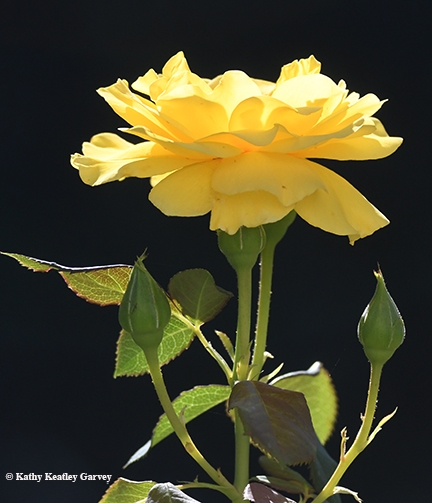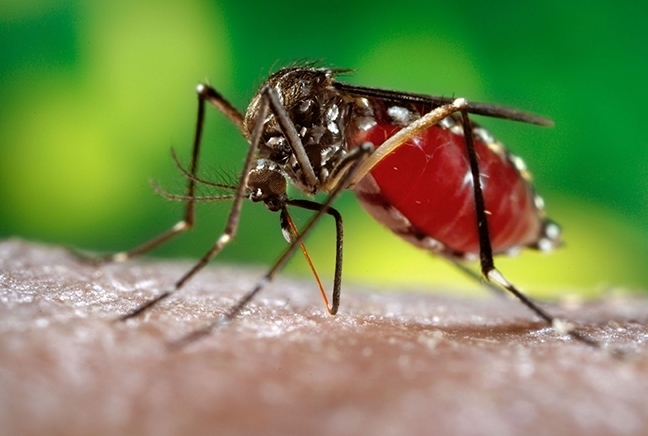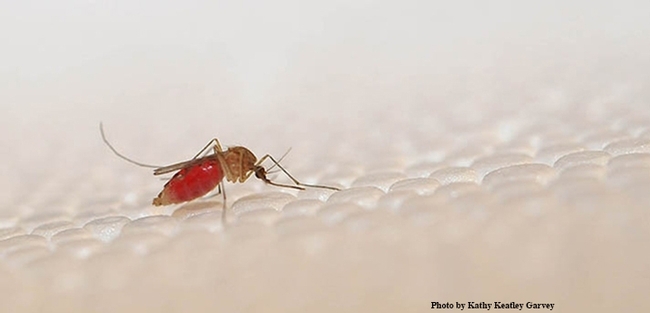
They manage to find us, don't they? Even when we're doing our best to try to avoid them!
It's not so well-known that mosquitoes, both male and female, frequent plants to feed on nectar for energy.
And now UC Davis chemical ecologist Walter Leal and scientists Fangfang Zen and Pingxi Xu of the Leal lab have discovered that the odorant receptors from the southern house mosquito, Culex quinquefasciatus, and the yellow fever mosquito Aedes aegypti, are sensitive to floral compounds.
They deposited the manuscript in bioRxiv (pronounced "bio-archive"), a preprint server for life sciences; the paper is pending publication in the journal, Insect Biochemistry and Molecular Biology.
The manuscript: "Odorant Receptors from Culex quinquefasciatus and Aedes aegypti Sensitive to Floral Compounds."
The team, led by Leal, a distinguished professor in the Department of Molecular and Cellular Biology and a former chair of the UC Davis Department of Entomology, cloned the genes of several odorant receptors from the mosquitoes and tested them, using egg cells of Xenopus toads. They exposed the cloned receptors to different scent chemicals.

"We are delighted to find out how mosquitoes smell plant-derived compounds and are repelled by them," Leal said. "These findings may lead to the discovery of better repellents from natural sources."
"Mosquitoes rely heavily on the olfactory system to find a host for a bloodmeal, plants for a source of energy and suitable sites for oviposition," the scientists explained in their abstract. "Here, we examined a cluster of 8 odorant receptors (ORs), which includes one OR, CquiOR1, previously identified to be sensitive to plant-derived compounds. We cloned 5 ORs from Culex quinquefasciatus and 2 ORs from Aedes aegypti, ie, CquiOR2, CquiOR4, CquiOR5, CquiOR84, CquiOR85, AaegOR14, and AaegOR15 and then deorphanized these receptors using the Xenopus oocyte recording system and a large panel of odorants. 2-Phenylethanol, phenethyl formate, and phenethyl propionate were the best ligands for CquiOR4 somewhat resembling the profile of AaegOR15, which gave the strongest responses to phenethyl propionate, phenethyl formate, and acetophenone. In contrast, the best ligands for CquiOR5 were linalool, PMD, and linalool oxide. CquiOR4 was predominantly expressed in antennae of nonblood fed female mosquitoes, with transcript levels significantly reduced after a blood meal. 2-Phenylethanol showed repellency activity comparable to that of DEET at 1%. RNAi experiments suggest that at least in part 2-phenylethanol-elicited repellency is mediated by CquiOR4 activation."
Meanwhile, Leal is gearing up for the 2019 Entomological Society of America (ESA) meeting in St. Louis, Mo., where he will deliver the Founders' Memorial Award Lecture on “Tom Eisner — An Incorrigible Entomophile and Innovator Par Excellence,” at the awards breakfast on Tuesday, Nov. 19.
ESA officials selected Leal, an ESA fellow and internationally recognized chemical ecologist, for the global honor. Leal is the first UC Davis scientist selected to present the Founders' Memorial Lecture, although medical entomologist Shirley Luckhart of the University of Idaho, formerly of UC Davis, delivered the lecture in 2018.
The 7000-member ESA is the world's largest organization serving the professional and scientific needs of entomologists and people in related disciplines. ESA, founded in 1889, is headquartered in Annapolis, Md.
X
Attached Images:

